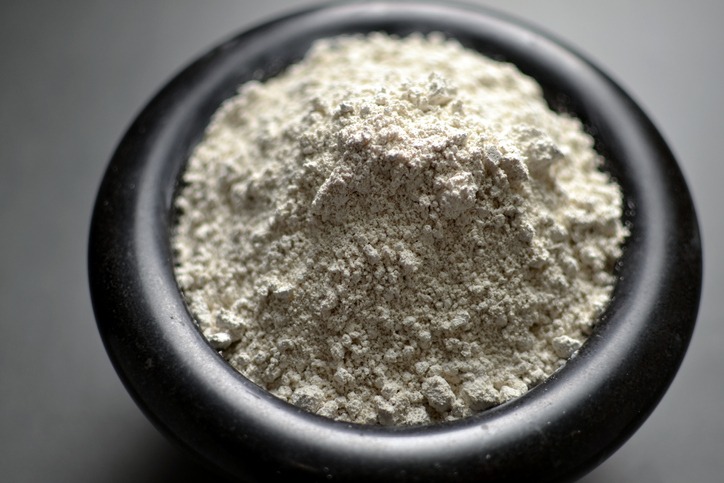Diatomaceous earth is a natural very soft rock composed of ancient tiny fossilized shells from prehistoric seas, and looks like a crumbly talcum powder.
It can be extremely useful in your garden as it is natural and non toxic to the extent that it is used as a grain additive.
There are different grades of the material, and some of the uses of Diatomaceous earth are:
1) A mild abrasive in facial scrubs.
2) A filtration aid in fish ponds.
3) An absorbent for liquids.
It is highly porous and safe and is often used to clean up chemical spills. It is also found in cat litter.
4) A thermal insulator, as it is heat resistant.
5) A growing medium.
There are different types of Diatomaceous earth, and if you enjoy hydroponic gardening, freshwater diatomite can be used as a growing medium. Bonsai enthusiasts may use it as a soil additive because it is very porous, drains quickly but retains nutrients allowing the oxygen to circulate freely. Potted plants can also benefit from it as an addition to their soil.
6) An insecticide. (which is the use we are mainly interested in.)
Using Diatomite in your garden can discourage such insects as aphids, beetles ants, and slugs and can also be used as a slug repellent. What is does in basically absorb the waxy lipids from the insect’s exoskeleton, causing them to dehydrate. It will not, however, harm your much-needed earthworms and is indeed added to worm beds to eliminate parasites. A note about it’s use against slugs, however; slugs like moist environments, and because Diatomaceous earth is absorbent and drying, slugs are likely to avoid it, which may be all you need. You can sprinkle it as a barrier, but if you want to actually kill the slugs, an attractant should be mixed with the powder first. There are also uses for this substance in controlling ticks, fleas, and cockroaches, which is why it is commonly used in grain storage. It is perfectly safe to use in your come and can be sprinkled on kitchen counters, under the foundations, cabinets, and where your pet sleeps. When buying, look for agricultural or horticultural grade for your garden, not pool grade. You should be able to find it at feed stores, but if not there are many online retailers who sell it.
How To Use.
First, the safety tip. While this substance is not toxic to mammals, (including Humans) the dust can irritate the mucous membranes of the mouth, throat, nose, and eyes. In any event, breathing any kind of dust for a period of time is not healthy. Always wear a dust mask when handling, and goggles if possible. Because it has a very drying effect on the skin, wear gardening or working gloves such as rubber gloves. Once the dust has settled, it will not cause any problems.
You can use it both on your growing plants and on the soil around them. Choose a time when it is not likely to rain for a day or two, and if it does reapply the earth after the rain has stopped and the earth dried. You can dust the plants by making or buying a large shaker. If you want to make your own, you could use something like an old coffee jar and punch several holes in the screw lid. If you buy large tins with the peel-off plastic lids, you can also use those. To avoid waste, and that ‘puff up’ effect you get with talcum powder bottles when you have finished simply put a layer of fine cloth, such as muslin, an old, thin tea-towel or cling film if you use it, over the end, and screw the lid back on over it. An old spice shaker or a plastic milk bottle could also be re-used as a shaker if you wash the latter, allow it dry and pierce holes in the lid. The perforations should be fairly large.
When you shake the earth onto plants it should look as if they are covered in a layer of frost, not caked, which could harm the natural growth of the plant. You can also paint it onto the stems and underside of the leaves by mixing equal amounts of earth and water into a bowl and painting on with an old paintbrush or any soft-bristled brush. However you use it, it should be reapplied each month in the growing season, and after heavy rain.
You can also use Diatomaceous earth on your lawn if you have one. Some people may want to use a dust sprayer for this, and if their lawns are large, but if you don’t have one, it can be sprinkled by hand. (It works, it just blows away more easily).
Make sure every-one is out of the way of the dust, including any pets you may have, put on your mask and goggles and apply with the wind at your back so it does not blow into your face.
Diatomaceous earth is a natural substance that has many uses in your garden, and because it is not poisonous to your plants or you, and requires only commonsense precautions. You can use it freely and with peace of mind.

